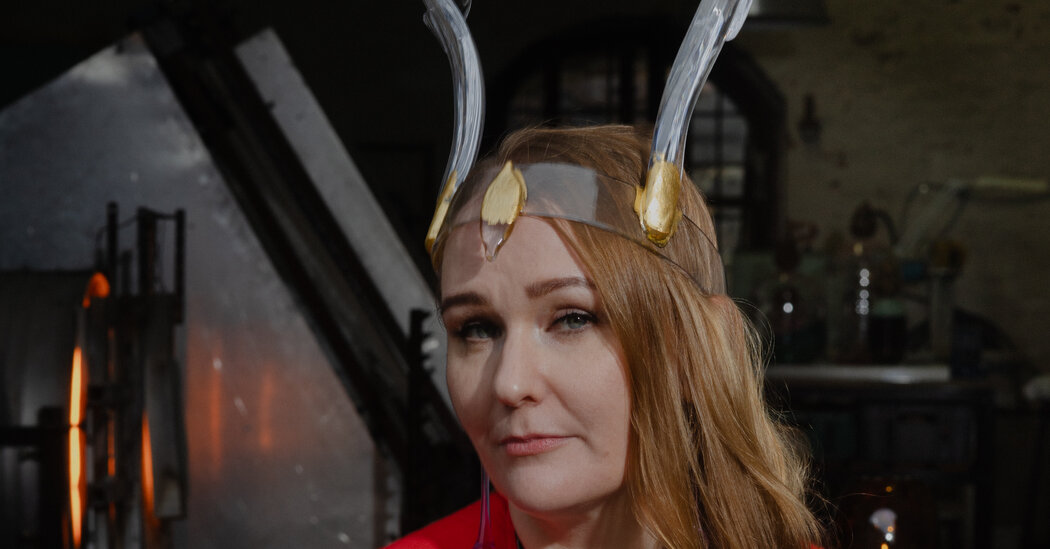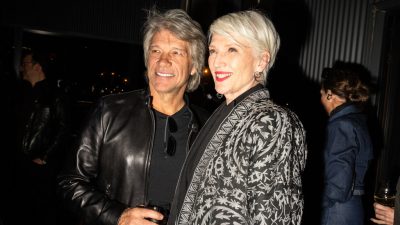In her workshop on Suomenlinna, an island fortress begun in 1748 to protect Helsinki, now the Finnish capital, from Russian invasions, Sini Majuri carries out her craft, the centuries-old art of glassmaking.
But behind the arched doors of her studio, which was once an armored chamber, the 40-year-old artist uses glass as a medium to explore often-complex subjects such as human nature, violence and femininity.
She pairs modern technology with traditional glassblowing techniques, including graal — a method in which a design or illustration is encased in multiple layers of colored and transparent glass.
“I can 100 percent say that her practices push the boundaries of glassmaking,” said Lincoln Kayiwa, a furniture and home accessories designer in Helsinki. “Every time we meet she has something new that she’s working on. And by new I don’t mean just a new project, but on a new approach, where she integrates glass with new techniques or production processes.”
Sitting outside her studio one recent afternoon, Ms. Majuri exuded the combination of modernity and antiquity reflected in her work. She wore one of her pieces — an antler-shaped, clear glass headdress — and a red linen gown she said she had sewn the previous day. (She had used a 3-D scanner to measure for the crown-like headdresses, one of which was used in a futuristic ballet featuring a human and a robot.)
“I think what interests me most is how to combine storytelling and glass,” she said. “Glass has this optical property. It mirrors the world around us but it can also bend and change an image. In this way I see it as a very poetic medium. And it is somehow a very interesting paradox, that it is both fragile and forever.”
Ms. Majuri had originally set her sights on a fashion career. During an exhibit of wearable technology in 2007 at China Fashion Week in Beijing, she noticed a large, glass wall-like sculpture designed by the Finnish glassmaker Oiva Toikka.
“I just admired the work and was hypnotized by it,” said Ms. Majuri, who went on to get a degree in glass and ceramics from Aalto University in Helsinki in 2013. “I thought it seemed like such a cool material and I knew then that I wanted to learn how to use it.”
Glass — its combination of fragility and durability; its power to distort, magnify and reflect — is now her signature medium. Her work has appeared in 95 exhibitions internationally and has won more than 20 awards, including 13 Italian A’ Design awards. (She has since served as a juror in the competition three times.)
“One of the main qualities that Sini has is this freshness, a way to see with virgin eyes the material and a way to discover new sides to it,” Adriano Berengo, a maker of contemporary glass, said by phone from the famed Italian glassmaking island of Murano. Ms. Majuri had demonstrated the graal technique in his studio last year during the Venice Glass Week festival.
“It’s a different way than I approach it,” he said, “but I can see the passion, the unlimited enthusiasm. This is the essential thing these new artists have that is bringing new things to glass.”
In 2017, she produced a 500-piece collection, the Jungle series, for the Dutch glassware brand Dutz collection. It sold out. She still makes them for clients: The pieces, which function as sculptural artworks or vases, are priced between 700 euros, or $528, and 2,500 euros.
Despite their minimalistic lines and cool colors typical of modern Scandinavian design, the inspiration behind the pieces, according to Ms. Majuri’s website, is the “serenity and wildness of the water,” and “the soft but intense” sound of crashing waves.
Back at the fortress, a UNESCO world heritage site, tourists paused to admire Ms. Majuri in her striking attire, and to peer into her studio, which houses a working kiln. Once the oven was hot enough, she used a rod called a punty to insert a glass bubble containing a 3-D illustration of an older woman in cat’s-eye glasses, part of a series about the generational bonds between women. Carefully, she rotated the rod, encasing the image in layers of transparent glass.
While traditional graal typically has nature-inspired designs such as plants and flowers etched or carved onto a glass core that is then encased in more layers of glass, Ms. Majuri prefers illustrations inspired by comic books, fairy tales and cartoons and produces them in metal using a CNC, or computerized numerical control machine.
“Her work is indeed original,” Anni Koskinen, owner of Galleria G12 in Helsinki, wrote in an email. “Even her superficially cute and beautiful artworks can have this rebellion punk spirit under the surface.”
More recent pieces by Ms. Majuri belong to her Antimatter series, which explores human nature and how, for example, women experience societal expectations of beauty and femininity, she said. Such complex questions, she added, are suited to the graal technique, invented in 1916 in Orrefors, Sweden.
“There are layers in this world we don’t see, like emotions and our inner-worlds, which have no matter or material in them,” she said. Using glass as an artistic medium, “you can reach these layers, these very poetic layers that are not easy to describe with words.”
“Sometimes even shadows are an important part of a piece — there are always hidden things in glass that you can only see from a certain angle, or only if it’s broken. And I think for this reason it is a such a poetic material; it’s kind of like a metaphor for humanity.”
Her Antimatter pieces, starting at €2,500, can function as decorative artworks or be fashioned into vases and lamps. She sells them online and at the Finnish design retailer Taiko Art. Typically round or egg-shaped and up to a foot tall, the pieces often come in rich, jewel-tone hues.
Another collection, Orinnoro, features sculptures suspended in roughly two-feet-tall, jar-like glass vessels, priced from €2,800 to €18,500. Ms. Majuri uses three-dimensional modeling software to design the sculptures — of pine cones, serpents and grasshoppers — which she then casts in bronze and secures in the glass containers.
“The idea is that the glass is super fragile and the bronze is really heavy,” she said. “There needs to be a balance, otherwise the piece will just break apart. The construction is also a metaphor for life, how we need to have our lives in balance.”
Sumber: www.nytimes.com












